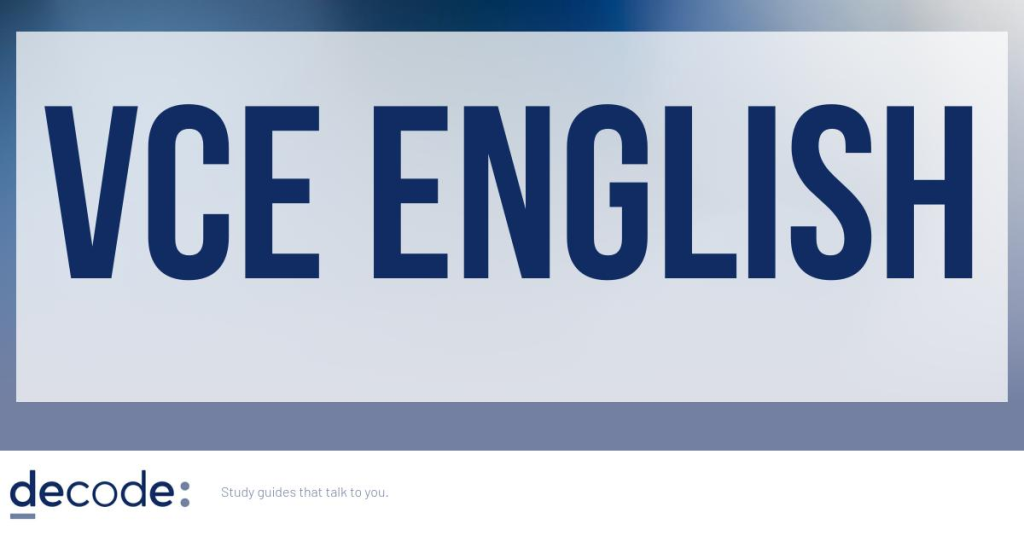This Resource is for English students studying in the Victorian Curriculum.

Did you Love The Left Hand of Darkness by Ursula K. Le Guin or Hate it?
Science Fiction as a Genre is sometimes defined as being an analytical and foretelling narrative at which a type of prediction is made. Quite often Science Fiction is so bizarre that you read it and become so confused you put it down and never pick it up again.
For those students who have read The Left Hand of Darkness did you get the story the first time? Or did it take you repeated readings to understand it? Once you read the novel a couple of times so many layers become obvious that you can understand why Le Guin won many prestigious literary awards for her writing.
I must admit the first time I started to read The Left Hand of Darkness I had to ‘get my head around’ the structure of the narrative, the names of the characters, the countries, the Hainnish calendar and Ursula K. Le Guin’s terminology for her fictional Hainnish Universe all set in the year 4870. While The Left Hand of Darkness is definitely part of the Science Fiction Genre, the narrative does also cover other Genres such as Fantasy, Mythology, Legend, Folklore and Feminism.
This Analysis Uses Shortened Versions of the Names of Characters
In this analysis of The Left Hand of Darkness, I have used a shortened version of the names of the two main characters rather than use their much longer versions that Le Guin has in the novel. So Therem Harth rem ir Estraven is just ‘Estraven’ and Genly Ai is just ‘Genly’. All my page number references are for the 1992 Orbit Edition of The Left Hand of Darkness by Ursula K. Le Guin (as pictured above).
Le Guin’s Purpose of Meaning
Le Guin’s purpose in this novel was not, in her own words, “[to predict] that in a millennium or so we will all be androgynous, or [to announce] that… we damned well ought to be androgynous.” Rather, she is observing that, in some ways, “we already are.” Le Guin’s purpose is not to convince us to move in a certain direction towards the future; rather, she is enabling us to examine ourselves from a different perspective and embrace alternate forms of identity and reality.
Two Halves of the Whole – Yin and Yang
Once I began to understand that The Left Hand of Darkness is not simply a science fiction novel; I could see how Le Guin’s described the novel in her own words as ‘a thought-experiment’. It forces us to examine ourselves and the nature of our existence. It provides a deep, scholarly, metaphorical analysis on gender, patriotism, and the concept of opposites.
The more I delved into the story I began to appreciate the characters of Genly and Estraven and how Le Guin developed the concept of “self and other”. Then I discovered the clever contrasts Le Guin explored of the binaries and the juxtapositions that exist on almost every level of the novel.
What fascinated me the most was the Daoist philosophy of yin and yang, opposites and reversals, which is shaped so beautifully by Le Guin. In true Daoist fashion, The Left Hand of Darkness not only highlights opposites for the sake of contrast, but stresses the necessity of accepting both extremes to realise the whole. The entire story is one of integration, on the personal, international and cosmic level, from existing divisions towards reconciliation and balance.
Le Guin asks us to question the very nature of binaries [dualism] themselves as Estraven said in the lines of the Handdara to Genly (p.190):
Light is the left hand of darkness
and darkness the right hand of light
Two are one, life and death
together like lovers in kemmer,
like hands joined together,
like the end and the way.
The Bond between Genly and Estraven
The central bond between Genly and Estraven is explored by Le Guin with immense subtlety. Le Guin cleverly describes the changes in a relationship that almost founders on misapprehensions and mistakes. Estraven is Genly’s surest and most selfless ally, and yet is the person Genly most distrusts. In his innocence and ignorance it seems that Genly will not survive the power struggles of which he has become the living symbol.
As Genly comes to accept Estraven as he is, he becomes less absorbed, more aware of his actions on his companion and in the end a wiser and more appreciative person. Genly’s companionship (is it really love?) with Estraven profoundly changes him and how he perceives the alien world that is now his home. Genly’s growth highlights the notion that one’s own wholeness of being can arise from a relationship in which both parties strive to accept one another. Estraven admits to Genly that they were “… equals at last, equal, alien, alone” on the Gobrin Ice (p.189).
However, in a heart-breaking reversal of expectation it is Estraven who finally pays the price in chapter 19 ‘The Homecoming’.
The Inhospitable Landscape of Gethen
What I did love was Le Guin’s wonderful creation of the inhospitable landscape of Gethen. The journey that Estraven and Genly make together on foot across the Gobrin Ice is described in all its frozen spendour. I was awestruck by the bleak beauty of this fictional planet and the prose and imagery of Le Guin as Estraven and Genly trekked through a “deep cold porridge of rain-sodden snow” (p.176), past a volcano with “worms of fire crawl down its black sides” (p.184). Le Guin took not only Genly and Estraven on a bitter winter journey, but us as readers, as we too saw the raw fury of nature on display in Gethen.
What is the Significance of the Title?
The title comes from the Handdara religion recited in a poem by Estraven on page 190 (shown in detail above). It refers to dualism and the importance of unity of opposites.
Le Guin’s Style of Writing
Le Guin’s writing style is descriptive with finer details of life on Gethen from architecture to weather patterns, diets to travelling habits. The novel is a blend of nature writing with anthropology and an understanding of a people’s connection to that place. Her treatment of Gethen as both a setting and a character infuses her world with vivid descriptions of landscape, character stories, adventures and traditional mythology.
Le Guin’s Narrative and Tone
Some stories are in 1st person narrative when Genly is reporting or from Estraven’s journal but when myths, legends or tales are told the narrative is in 3rd person omniscient. The myths form a backdrop for the story and explain specific features about Gethenian culture as well as larger philosophical aspects of society.
Le Guin presents the novel as Genly’s field report to the Ekumen so his tone is exact. As Genly develops understanding of the Gethenians he evolves with more awareness and he becomes descriptive.
Estraven’s chapters take on a journalistic tone since they are journal entries. The mythological stories have a folk tale tone.
The narrative can also be seen as a Bildungsroman or coming of age story of Genly as his journey of transformation.
The Plot in a Nutshell
The plot consists of 3 major sections and a brief conclusion. The first section is set in Karhide, the second in Orgoreyn, the third on the Gobrin Ice and the conclusion is set in Karhide.
In a nutshell it is the story of an icy snowbound planet called Gethen (Winter) where a solitary envoy from the Ekumen, Genly Ai is sent to try and persuade the inhabitants of Gethen to join a federation of nations for the purpose of expanding trade and an interplanetary alliance. Gethen is an isolated and harsh world of ice and snow whose inhabitants are unique in their physiology as they are androgynous beings; neither male nor female. Unfortunately Genly discovers two hostile nations, Karhide and Orgoreyn gearing up for war and his arrival feeds the rivalries between the two states.
In Karhide, King Argaven is reluctant to accept Genly’s diplomatic mission. In Orgoreyn, Genly is seemingly accepted more easily by the political leaders, yet he is arrested, stripped of his clothes, drugged, and sent to a work camp.
Rescued by Estraven, the deposed Prime Minister of Karhide, Genly realizes that cultural differences, specifically shifgrethor, gender roles and Gethenian sexuality, had kept him from understanding their relationship previously.
During their 80-day journey across the frozen land of the Gobrin Ice to return to Karhide, Genly learns to understand and love Estraven and is able to fulfill his mission to join Karhide and Orgoreyn within the federation of the Ekumen.
Major Themes/Issues/Ideas
Language / communication / storytelling / gender / politics/ religion / fear of difference & fear of change / the ‘other’ / acceptance / duty / man & the natural world / warfare / love / human relationships / dualism / yin & yang / unity / loyalty / betrayal / honour / ethnic differences /respecting differences / sexuality/ androgyny
Symbols and Motifs
Shadows / light / darkness / the ansible [communication device] / religious teachings / keystone / yin & yang / shifgrethor [equality or honour]
Characters – Major
Genly Ai = the first Envoy of the Ekumen on Gethen. He is the protagonist of the novel, a native of Terra (Earth).
Estraven, Therem Harth rem ir = is a Gethenian from the Domain of Estre in Kerm Land in the southern part of the Kardish continent. He is Prime Minister of Karhide at the beginning of the novel.
Argaven, Harge XV = is the King of Karhide during the events of the novel.
Tibe, Pemmer Harge rem ir = is Argaven’s cousin and later becomes Prime Minister of Karhide when Estraven is exiled.
Obsle, Yegey, Shusgis = are Commensals that rule Orgoreyn.
Faxe, The Weaver = is a Foreteller of Otherhord
Ashe = is Estraven’s former kemmering
Characters – Minor
Goss = helps Genly find his way to the Fastnesses
Mavriva = is a fur trader who helps Estraven
Thessicher = is a old friend of Estraven but later betrays him
Arek = is Estraven’s dead brother
Sorth = is Estraven’s son
Esvans = is Estraven’s father
Online Tutoring of English Using Zoom


















 Look carefully at the similarities and differences between the two main characters Genly Ai and Therem Harth Rem Ir Estraven in Ursula K. Le Guin’s
Look carefully at the similarities and differences between the two main characters Genly Ai and Therem Harth Rem Ir Estraven in Ursula K. Le Guin’s 
